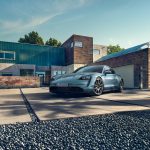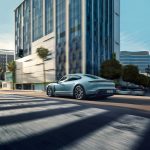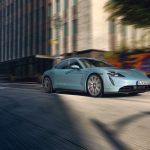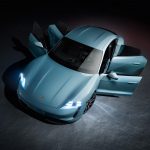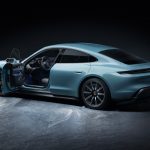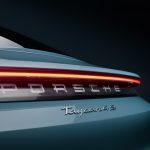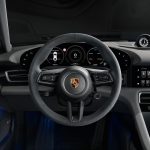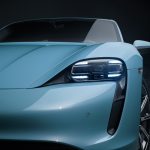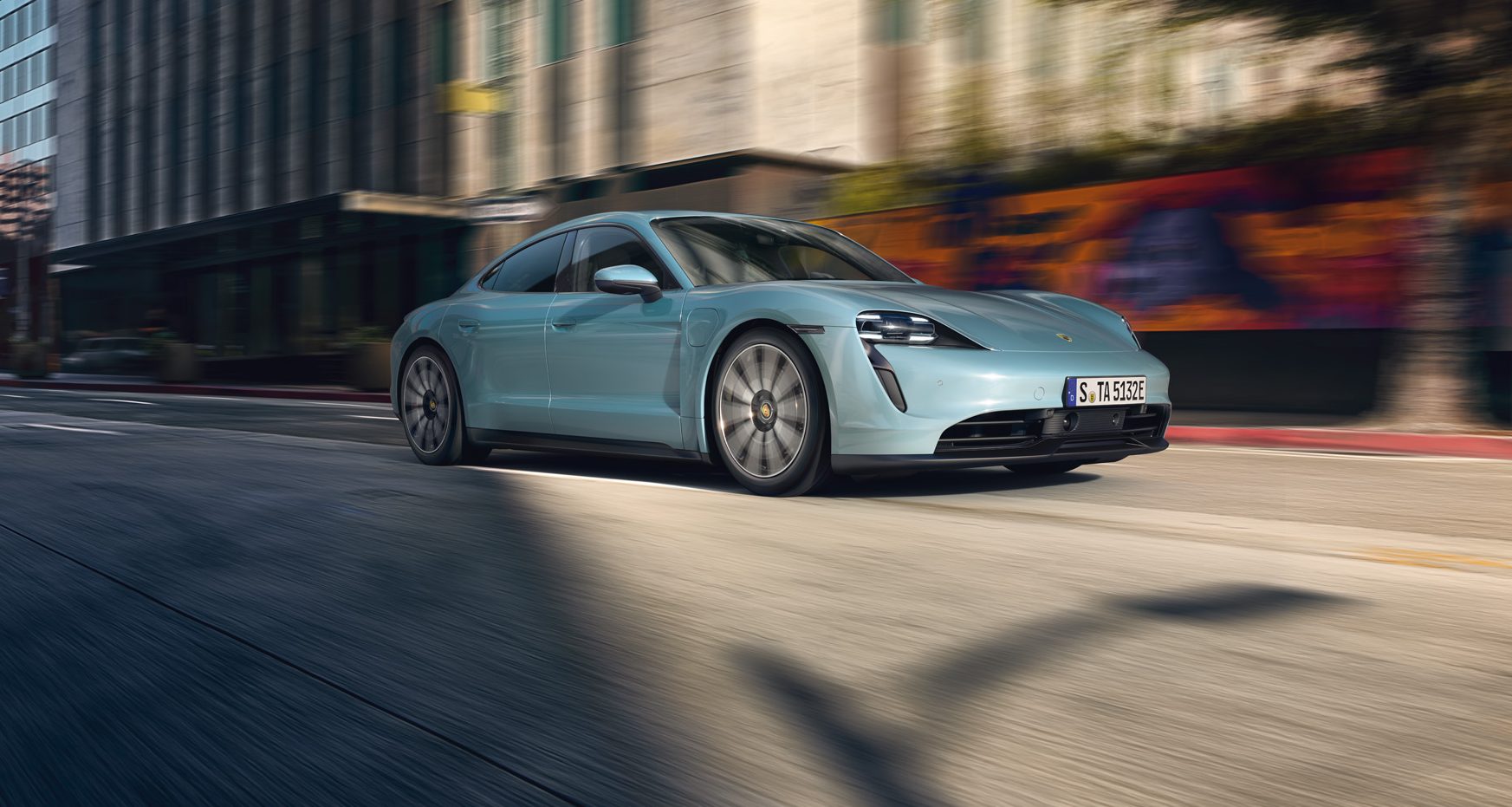
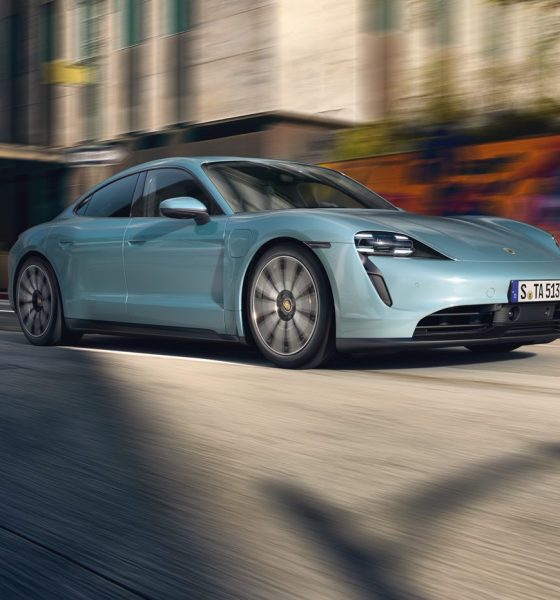
News
Porsche releases Taycan 4S: Price, performance, battery options, and more
Just over a month after launching the first two variants of the Taycan, Porsche has announced another version of its flagship all-electric sports car, the dual-motor Taycan 4S. Priced below the Taycan Turbo, the midrange variant of the electric sports car could very well hit the sweet spot for buyers who prefer to have the full Porsche experience without spending over $150,000.
Here’s a quick look at the Porsche Taycan 4S’s details.
Design and Battery Sizes
A look at the Taycan 4S shows that the vehicle is just as stunning as the Turbo and Turbo S variant that preceded it. The Taycan 4S’ dimensions are identical to the vehicle’s top two versions, though its wheels are a touch smaller at 19″ compared to the Turbo’s 20″ and the Turbo S’ 21″ wheels. The 4S is also equipped with red six-piston fixed-calipers on the front axle and four-piston calipers on the rear axle with internally vented cast-iron brake rotors.
The Taycan 4S will be released with two available battery sizes: the standard Performance battery that delivers up to 522 hp (390 kW) and the Performance Battery Plus that up to 563 hp (420 kW). The Performance Battery has a capacity of 79.2 kWh as standard, while the Performance Battery Plus features the same 93.4 kW battery that is fitted on the Taycan Turbo and Turbo S.
- The Porsche Taycan 4S. (Credit: Porsche AG)
- The Porsche Taycan 4S. (Credit: Porsche AG)
- The Porsche Taycan 4S. (Credit: Porsche AG)
- The Porsche Taycan 4S. (Credit: Porsche AG)
The Porsche Taycan 4S. (Credit: Porsche AG)
Performance, Charging, and Interior
Yet despite the differing battery sizes, Porsche notes that the Taycan 4S will have a 0-60 mph time of 3.8 seconds. The top speed of the vehicle is listed at 155 mph. US EPA range estimates for the Taycan 4S are yet to be announced.
Under ideal conditions, the Porsche Taycan 4S could charge from 5% to 80% state of charge can occur in as little as 22.5 minutes for both the Performance and Performance Plus battery, at least when the vehicle is plugged into an 800-volt high-speed DC charging station. The maximum charging capacity (peak) is 225 kW for the Performance Battery or 270 kW for the Performance Battery Plus.
Being part of the Taycan family, the 4S is available with multiple interior options, though Porsche underscores the company’s use of recycled materials for the vehicle. A partial leather interior comes standard with the midrange all-electric car.
- The Porsche Taycan 4S. (Credit: Porsche AG)
- The Porsche Taycan 4S. (Credit: Porsche AG)
- The Porsche Taycan 4S. (Credit: Porsche AG)
- The Porsche Taycan 4S. (Credit: Porsche AG)
- The Porsche Taycan 4S. (Credit: Porsche AG)
- The Porsche Taycan 4S. (Credit: Porsche AG)
The Porsche Taycan 4S. (Credit: Porsche AG)
Price
In a way, the Porsche Taycan 4S could very well be the bang-for-your-buck version of the German automaker’s flagship electric sports car line. Apart from having the same battery size as the Taycan Turbo and Turbo S, the 4S is also equipped with the same Permanent Magnet Synchronous Motor (PSM) as the vehicle’s top two trims.
Granted, the vehicle’s maximum power stands at 563 hp with launch control compared to the Taycan Turbo’s 670 hp and the Turbo S’ 750 hp with launch control, but the vehicle is also priced significantly less. The Taycan 4S with Performance Battery starts at $103,800 ($106,410 at launch), while the 4S with Performance Battery Plus starts at $110,380 ($112,990 at launch).
That’s around $40,000-$46,000 less than the Taycan Turbo, which starts at $150,900 ($153,510 at launch), and over $74,000-$80,000 less than the Taycan Turbo S, which starts at $185,000 ($187,610 at launch).
Here’s a full comparison of Porsche’s current lineup for its flagship electric car.
Porsche Taycan Technical Spec Sheet by Simon Alvarez on Scribd

Elon Musk
Starlink passes 9 million active customers just weeks after hitting 8 million
The milestone highlights the accelerating growth of Starlink, which has now been adding over 20,000 new users per day.

SpaceX’s Starlink satellite internet service has continued its rapid global expansion, surpassing 9 million active customers just weeks after crossing the 8 million mark.
The milestone highlights the accelerating growth of Starlink, which has now been adding over 20,000 new users per day.
9 million customers
In a post on X, SpaceX stated that Starlink now serves over 9 million active users across 155 countries, territories, and markets. The company reached 8 million customers in early November, meaning it added roughly 1 million subscribers in under seven weeks, or about 21,275 new users on average per day.
“Starlink is connecting more than 9M active customers with high-speed internet across 155 countries, territories, and many other markets,” Starlink wrote in a post on its official X account. SpaceX President Gwynne Shotwell also celebrated the milestone on X. “A huge thank you to all of our customers and congrats to the Starlink team for such an incredible product,” she wrote.
That growth rate reflects both rising demand for broadband in underserved regions and Starlink’s expanding satellite constellation, which now includes more than 9,000 low-Earth-orbit satellites designed to deliver high-speed, low-latency internet worldwide.
Starlink’s momentum
Starlink’s momentum has been building up. SpaceX reported 4.6 million Starlink customers in December 2024, followed by 7 million by August 2025, and 8 million customers in November. Independent data also suggests Starlink usage is rising sharply, with Cloudflare reporting that global web traffic from Starlink users more than doubled in 2025, as noted in an Insider report.
Starlink’s momentum is increasingly tied to SpaceX’s broader financial outlook. Elon Musk has said the satellite network is “by far” the company’s largest revenue driver, and reports suggest SpaceX may be positioning itself for an initial public offering as soon as next year, with valuations estimated as high as $1.5 trillion. Musk has also suggested in the past that Starlink could have its own IPO in the future.
News
NVIDIA Director of Robotics: Tesla FSD v14 is the first AI to pass the “Physical Turing Test”
After testing FSD v14, Fan stated that his experience with FSD felt magical at first, but it soon started to feel like a routine.

NVIDIA Director of Robotics Jim Fan has praised Tesla’s Full Self-Driving (Supervised) v14 as the first AI to pass what he described as a “Physical Turing Test.”
After testing FSD v14, Fan stated that his experience with FSD felt magical at first, but it soon started to feel like a routine. And just like smartphones today, removing it now would “actively hurt.”
Jim Fan’s hands-on FSD v14 impressions
Fan, a leading researcher in embodied AI who is currently solving Physical AI at NVIDIA and spearheading the company’s Project GR00T initiative, noted that he actually was late to the Tesla game. He was, however, one of the first to try out FSD v14.
“I was very late to own a Tesla but among the earliest to try out FSD v14. It’s perhaps the first time I experience an AI that passes the Physical Turing Test: after a long day at work, you press a button, lay back, and couldn’t tell if a neural net or a human drove you home,” Fan wrote in a post on X.
Fan added: “Despite knowing exactly how robot learning works, I still find it magical watching the steering wheel turn by itself. First it feels surreal, next it becomes routine. Then, like the smartphone, taking it away actively hurts. This is how humanity gets rewired and glued to god-like technologies.”
The Physical Turing Test
The original Turing Test was conceived by Alan Turing in 1950, and it was aimed at determining if a machine could exhibit behavior that is equivalent to or indistinguishable from a human. By focusing on text-based conversations, the original Turing Test set a high bar for natural language processing and machine learning.
This test has been passed by today’s large language models. However, the capability to converse in a humanlike manner is a completely different challenge from performing real-world problem-solving or physical interactions. Thus, Fan introduced the Physical Turing Test, which challenges AI systems to demonstrate intelligence through physical actions.
Based on Fan’s comments, Tesla has demonstrated these intelligent physical actions with FSD v14. Elon Musk agreed with the NVIDIA executive, stating in a post on X that with FSD v14, “you can sense the sentience maturing.” Musk also praised Tesla AI, calling it the best “real-world AI” today.
News
Tesla AI team burns the Christmas midnight oil by releasing FSD v14.2.2.1
The update was released just a day after FSD v14.2.2 started rolling out to customers.
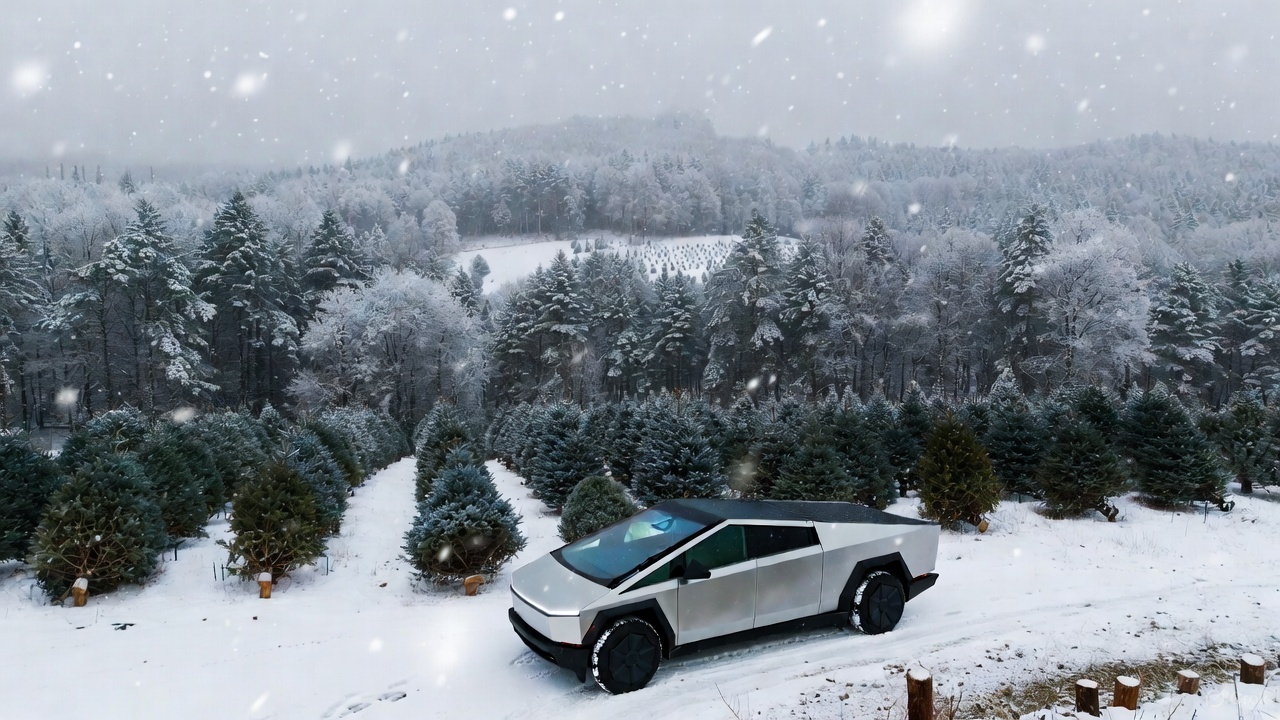
Tesla is burning the midnight oil this Christmas, with the Tesla AI team quietly rolling out Full Self-Driving (Supervised) v14.2.2.1 just a day after FSD v14.2.2 started rolling out to customers.
Tesla owner shares insights on FSD v14.2.2.1
Longtime Tesla owner and FSD tester @BLKMDL3 shared some insights following several drives with FSD v14.2.2.1 in rainy Los Angeles conditions with standing water and faded lane lines. He reported zero steering hesitation or stutter, confident lane changes, and maneuvers executed with precision that evoked the performance of Tesla’s driverless Robotaxis in Austin.
Parking performance impressed, with most spots nailed perfectly, including tight, sharp turns, in single attempts without shaky steering. One minor offset happened only due to another vehicle that was parked over the line, which FSD accommodated by a few extra inches. In rain that typically erases road markings, FSD visualized lanes and turn lines better than humans, positioning itself flawlessly when entering new streets as well.
“Took it up a dark, wet, and twisty canyon road up and down the hill tonight and it went very well as to be expected. Stayed centered in the lane, kept speed well and gives a confidence inspiring steering feel where it handles these curvy roads better than the majority of human drivers,” the Tesla owner wrote in a post on X.
Tesla’s FSD v14.2.2 update
Just a day before FSD v14.2.2.1’s release, Tesla rolled out FSD v14.2.2, which was focused on smoother real-world performance, better obstacle awareness, and precise end-of-trip routing. According to the update’s release notes, FSD v14.2.2 upgrades the vision encoder neural network with higher resolution features, enhancing detection of emergency vehicles, road obstacles, and human gestures.
New Arrival Options also allowed users to select preferred drop-off styles, such as Parking Lot, Street, Driveway, Parking Garage, or Curbside, with the navigation pin automatically adjusting to the ideal spot. Other refinements include pulling over for emergency vehicles, real-time vision-based detours for blocked roads, improved gate and debris handling, and Speed Profiles for customized driving styles.
